

| Home | Log In | Register | Our Services | My Account | Contact | Help |
You are NOT currently logged in
dai oldenrich - 01 Sep 2006 13:32
click your browser refresh button to update charts
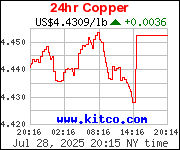
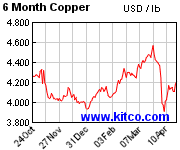
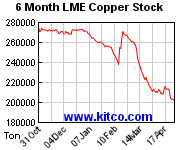
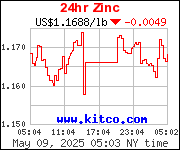
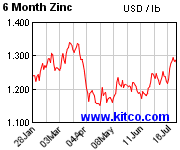
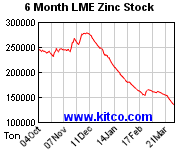
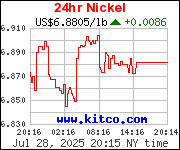
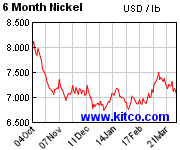
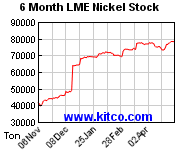
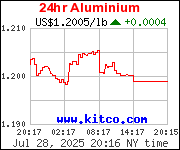
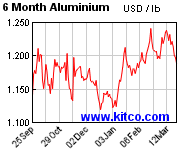
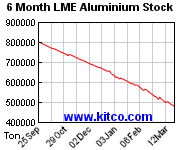
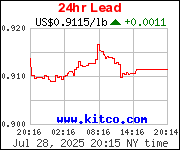
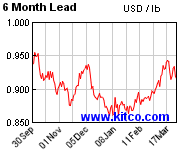
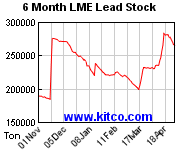
Also see: gold charts here silver charts here platinum charts here
cynic

 - 07 May 2007 09:01
- 177 of 181
- 07 May 2007 09:01
- 177 of 181
from here, i do not see the physical demand for stainless, and thus by definition, iron ore, nickel and copper and moly reducing over the next 12 or 24 or perhaps even 36 months ..... have a look at today's Telegraph biz section and the article re the boom in cargo shipping.
gold, of course, has a mind and logic of its own!
gold, of course, has a mind and logic of its own!
e t - 07 May 2007 16:59 - 178 of 181
WORLD TRIBUNE.COM - By Sol Sanders
The Chinese bubble is about to pop
All signs point to an approaching Chinese economic crisis.
Given the lack of transparency, the impact of the coming landing is even less predictable than such economic developments elsewhere.
There are daily announcements by Communist leadership aimed at cooling an overheated economy. But most are fictitious, a cover for bottlenecks in some sectors, unrestrained speculation in others. So any divination is just that.
There is no denying the remarkable last decades progress. GDP growth figures are probably exaggerated. The truth is nobody really knows. [One cannot forget an angry ex-Prime Minister Zhu Rongzi publicly dressing down regional officials for giving him manufactured figures.] Given the fact that 80 percent of Chinas more than one billion do not share in success of the effort to introduce a liberal economy in a totalitarian state, we have little history to judge the whole experiment.
But here is intelligent Shanghai gossip:
Despite all restrictions, held in place by occasional draconian prosecution [executions], for corruption, illegal hot money has poured in. Theoretically Beijing has control of its currency. In fact, in 1997, Zhu, with controls and by juggling export subsidies, spared China the effects of the East Asia Financial Crisis. But that was eons ago in Chinese economic development. Once again, the Chinese have proved their phenomenal entrepreneurial talent. The central banks hard currency reserves are now reaching an incredible trillion dollars. That, in turn, introduces inflation with the exchange of imported dollars for renminbao.
Speculators believe, despite all government statements [and the hard line Chinese leaders took with Vice President Cheney this week on American demands for reevaluation], upward movement will come. They want a slice when they trade back into dollars.
China is suddenly facing an overall trade deficit nearly $9 billion in the first quarter and likely to grow exponentially. That is despite its enormous U.S. trade surplus. probably as much as $142 billion last year, and probably growing even more rapidly as U.S. consumer confidence sucks in more consumer goods. The overall trade deficit, likely to snowball so long as Chinas export boom continues, results from a growing import bill for raw materials [and components for assemblies China exports]. Ironically, China itself pushes world prices. China has become the worlds second largest oil importer [after the U.S.] with prices rising. [Chinas oil imports increased 38 percent last year; predictions were for a fuel imports doubling this year.] Chinas pull has inflated world prices for example, benchmark hot-rolled-sheet price jumped 80 percent to $500 a net ton, a 15-year high.
All this has pressured Chinas claptrap financial system. Despite repeated statements by the authorities to brake lending, Chinas four main banks probably have increased it by 10 percent just this year. Thats despite signs some sectors are piling up inventories Shanghai and Beijing real estate, household appliances, automobiles. Again nobody knows, but nonperforming loans may be 50 percent or higher. And, again despite repeated statements, banking practices have not changed. One important reason: Chinas huge, Soviet days white elephants, so-called state-owned enterprises [SOEs], are bleeding the banks with their enormous political influence and the fear of additional unemployment were their bankruptcy finally faced. [Recently, Prime Minister Wen Jiatao trotted out the argument their maintenance in the Northeast rustbelt was a matter of national security.] One danger, of course, is of a run on savings institutions by Chinas incredibly frugal savers when a switch back to dollars after a postponed reevaluation.
Chinas economic fragility is not just a problem for Beijing. As the Chinese maw has grown, it has become a growing market for its neighbors. Thailand, Singapore, Malaysia, Philippines and Australia have seen their exports to China including manufactures grow by as much as 50 percent. Japan is coming out of its decade of stagnation, in part because of the fillip Chinese exports have given its still only partially reformed export-led economy. South Korea, caught in political and economic crosscurrents, counts on its China boom for its high tech exports to buoy it until domestic demand returns. Even the U.S., however much it might complain over the loss of jobs to China, continues to have a lower inflation rate in part because Beijing [as well as Tokyo, Seoul, Taipei and Hong Kong] gobble up its treasury notes, halting any crowding out of private sector borrowing in capital markets.
Beijings new leadership, noted for its non-risk-taking past, is caught in the headlights. It dare not fiddle with the currency tied to the dollar, its only stable economic tool. On the other hand, even if no one else does, Chinese Communists remember their rise to power owed as much if not more to runaway inflation in the last years of the Chiang Kaishek regime as to battlefield victories. [The Chinese inflationphobia is as great as the Germans who remember the 20s inflation that brought Hitler.]
An hour of decision is approaching rapidly.
e t - 07 May 2007 17:06 - 179 of 181
FT - May 6 2007
Chinas stock market
However you measure it, the Chinese stock market is a bubble. Top cadres have warned as much. New offerings are doubling in value on day one and shareholder accounts are multiplying at a phenomenal rate. So far this year, the domestic currency A share market is up 43 per cent and daily turnover exceeds $30bn.
The authorities face a stark choice: act now to deflate the bubble or wait for the inevitable implosion and equally inevitable street protests. But Beijing has limited tools with which to take pre-emptive action. Verbal warnings and the stemming of credit by hiking banks reserve requirements have both failed. Interest rates would need to be sky-high before investors spurned the stock market, up almost 1 per cent a day in the past two months, while bank deposits currently yield negative returns in real terms.
____________________________________________________________________
.....................and so on and soforth. It all just has to go pop some time soon.
Anyone believing that the present frenzy in rising markets will continue much longer is simply deluding themselves.
It's a real world that we live in and a very simply fact of life is 'what goes up must come back down again'.
Often with quite a bump!
cynic

 - 07 May 2007 18:11
- 180 of 181
- 07 May 2007 18:11
- 180 of 181
don't confuse commodity requirements with a rising stock market or even rising commodity prices, both of which can and often are driven by speculation ...... although nothing rises or falls inexorably, it is a matter of fact that China (and India and Pakistan) not only needs huge imports of raw materials to satisfy its domestic demands, but China (and India and Pakistan) has become one of the very top manufacturing and exporting countries in the world.
e t - 10 May 2007 23:17 - 181 of 181
Copper Falls Most in Three Months on Signs of Slowing Demand - By Millie Munshi
May 10 (Bloomberg) -- Copper futures in New York tumbled the most in three months on signs that demand may slow in China, the world's largest user of the metal used in pipes and wires. Stockpiles in Shanghai Futures Exchange warehouses have more than doubled this year to the highest since December 2005, indicating that China may buy less copper from overseas. Futures had climbed 32 percent in the two months before today as China's imports surpassed last year's pace for four straight months. ``We're expecting to see a deceleration in Chinese imports,'' said Mark Liinamaa, a metals analyst with Morgan Stanley in New York. ``It's likely that they got a little ahead of themselves in the first part of the year and imported more than their overall need.''
Copper futures for July delivery fell 11.25 cents, or 3.1 percent, to $3.5665 a pound on the Comex division of the New York Mercantile Exchange. The drop was the biggest since Feb. 2, when most-active futures fell 4.3 percent during a rout in global equity markets. ``A large reason you've seen copper pullback is because China has slowed down a little bit in their buying,'' Kevin Kerr, president of Kerr Trading International in Wilton, Connecticut, said in an interview May 7.
Metal for immediate delivery in Changjiang, Shanghai's biggest cash market, fell as much 2.6 percent today. Cash prices have remained lower than front-month futures prices, suggesting enough supplies are in the spot market to meet demand.
Pulling Out
``People have started pulling out of the market,'' Liinamaa said. Morgan Stanley estimates that copper will average $3.05 a pound this year, down 14 percent from today's close. The metal has averaged $2.98 so far this year. Traders who follow historical price charts also sold copper today, said Marc Kaplan, president of Mews Metal Trading LLC in Verona, New Jersey. Copper's so-called relative strength index, which gauges how rapidly prices have gained or fallen, reached 71.3 on May 1. Readings above 70 indicate a price may be poised to fall. ``Prices had been moving very quickly,'' Kaplan said. ``The price has probably gotten too high, and people are starting to take some money off the table.''
On the London Metal Exchange, copper for delivery in three months fell $160, or 2 percent, to $7,890 a metric ton. The metal reached a record $8,800 on May 11, 2006. A futures contract is an obligation to buy or sell a commodity at fixed price for delivery by a specific date.

